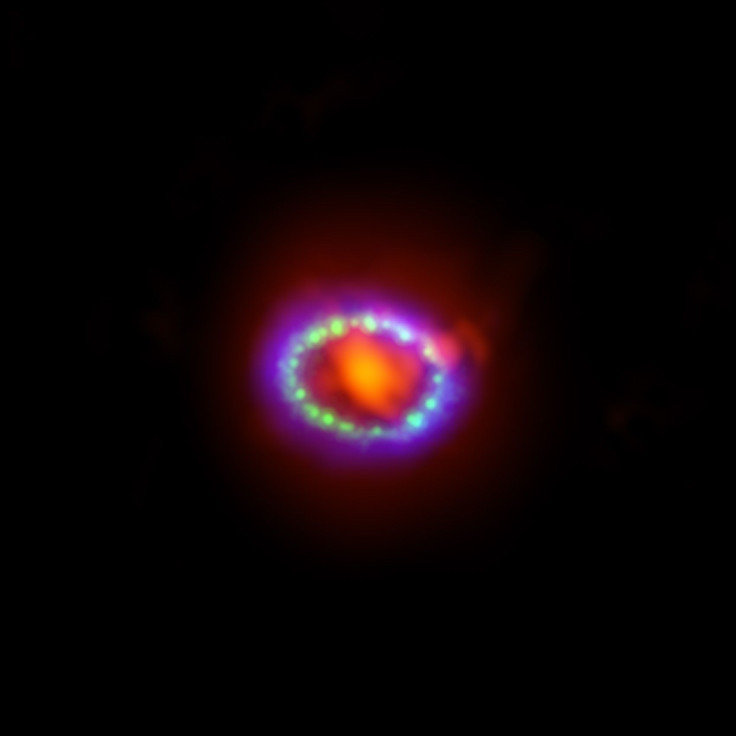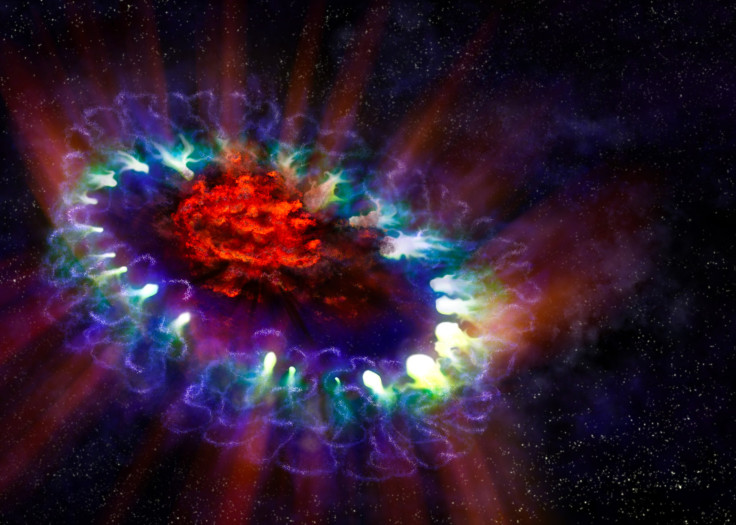Recent Supernova 1987A Serves As A ‘Dust Factory’ For Early Universe Galaxies
Researchers were able to get a good look at a recent supernova and discovered an incredible cloud of dust surrounding the remains of the exploded star. The amount of dust formed by the supernova could explain why galaxies from the early universe contain so much dust, which plays an important role in galaxy formation.

Dust is found everywhere in the universe and plays a role in the formation of stars, planets and galaxies. Astronomers have proposed several possible causes for all dust seen in the universe, with supernovae playing a pivotal role in dust creation. Researchers have been unable to find a lot of evidence to support this theory prior to the observations of SN 1987A.
Supernova 1987A, SN 1987A, occurred in the Large Magellanic Cloud, approximately 168,000 light-years from Earth. SN 1987A “is the closest observed supernova explosion since Johannes Kepler's observation of a supernova inside the Milky Way in 1604,” notes the European Space Agency.
Using the ESO’s Atacama Large Millimeter/submillimeter Array (ALMA) telescope in Chile, researchers were able to detect a large dust cloud surrounding the supernova. The newly formed dust has a mass roughly 25 percent that of the sun. Astronomer Remy Indebetouw, from the National Radio Astronomy Observatory (NRAO) and the University of Virginia, said in a statement, “This is the first time we've been able to really image where the dust has formed, which is important in understanding the evolution of galaxies.”

Initial observations of SN 1987A revealed little hot dust, dealing a blow to astronomers expecting to see large quantities of dust, the result of oxygen, carbon and silicon combining. Despite the setback, the new ALMA observations confirm those expectations as the telescope was able to capture the cold dust cloud surrounding the supernova remnant.
While the supernova has created a lot of dust, not all of it will survive, notes the ESO. The initial shockwave from the supernova will hit a wall of gas that was shed by the red giant star responsible for SN 1987A, ricocheting back to the supernova remnant and destroying some of the new dust. “At some point, this rebound shockwave will slam into these billowing clumps of freshly minted dust,” said Indebetouw. The shockwave could destroy a “half or two thirds” of the new dust, which would be enough to explain the large amount of dust seen in the early universe, notes the ESO.
© Copyright IBTimes 2024. All rights reserved.






















